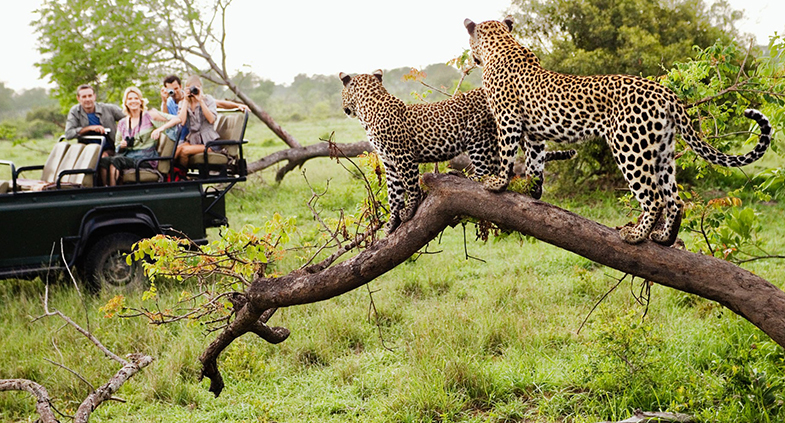Introduction
In Jaipur, Rajasthan, India, Jhalana Safari, commonly referred to as Jhalana Leopard Safari, offers a breathtaking wildlife experience. Jhalana Wildlife Reserve, which is tucked away among the Aravalli hills, is well known for its effective leopard conservation efforts and offers visitors a singular chance to see these magnificent cats in their native setting. This essay will examine Jhalana Safari’s significance, history, safari experience, and conservation efforts.
1. Meaning of the Jhalana Safari
1.1 Keeping Biodiversity Alive
Jhalana Safari is essential to maintaining the area’s rich biodiversity. In the reserve, you can find a wide variety of plants and animals, such as peacocks, spotted deer, nilgais, leopards, and many different kinds of birds. Jhalana Safari helps to preserve the neighbourhood environment by encouraging eco-friendly tourist methods and raising public awareness of the value of wildlife protection.
1.2 Leopard preservation
The Jhalana Wildlife Reserve is well known for its effective leopard conservation initiatives. Leopards are abundant in the reserve, and the safari offers a unique chance to see these elusive creatures in their natural habitat. Researchers and conservationists can learn more about the behaviour, habitat needs, and population dynamics of leopards thanks to the data gathered during the safari, which helps with long-term leopard conservation.
1.3 Ecotourism promotion
Ecotourism is best exemplified by Jhalana Safari, which combines environmental preservation with ethical travel practices. Visitors interact with the environment, recognise its beauty, and comprehend the value of protecting our natural legacy. Bookings for safaris bring in money that supports the regional economy and assures its continuous growth.
2. Jhalana Safari’s past
2.1 Jhalana Wildlife Reserve creation
The Jhalana Wildlife Reserve was initially created as a hunting preserve for the Jaipur royal family. However, it was designated a wildlife reserve in the 1950s due to a shift in emphasis towards conservation and a growing need to safeguard species. The reserve’s infrastructure and biodiversity have been improved over time.
2.2 Population Growth of Leopards
The reserve’s committed conservation efforts allowed the leopard population in Jhalana to continuously increase. The flourishing leopard population was aided by the abundance of prey, good habitat, and little human disturbance. Jhalana quickly established itself as one of India’s top locations for viewing leopards in the wild.
2.3 Changing to a Safari Location
Authorities opened the reserve for planned safaris after realizing Jhalana’s potential as a safari destination. This action helped wildlife enthusiasts and brought in money for upkeep and additional conservation initiatives on the reserve. Today, Jhalana Safari draws tourists from all over the world by providing them with an exceptional wildlife experience inside the city limits.
3. Safari Experience at Jhalana
3.1 Organizing a safari
Visitors must reserve their safari slots in advance in order to go on a Jhalana Safari trip. Due to the limited number of slots every day, online booking options are available, but it is advised to make reservations in advance. To guarantee that there is no impact on the animals and to preserve the safari’s exclusivity, the authorities control the number of tourists.
3.2 Timing and Length
Every day, Jhalana Safari has two operating times: one in the morning and one in the evening. The timings are chosen to increase the likelihood of seeing leopards and other wildlife. Each safari lasts about three hours on average, giving guests plenty of time to explore the area and see the wildlife.
3.3 Safari Routes
The safari routes within Jhalana Wildlife Reserve are carefully designed to cover the leopard’s preferred territories and areas frequented by other wildlife. Trained guides lead the safaris and take visitors through the dense scrub forests, rocky terrains, and open grasslands, ensuring a comprehensive wildlife experience.
3.4 Observations of Wildlife
Leopards are Jhalana’s main draw, although the reserve also has a variety of other animals. Spotted deer bounding through the woodland, peacocks displaying their colourful plumage, and jackals or hyenas occasionally appear may be seen by visitors. The variety of birds, which includes Indian roller, grey francolin, and Indian pitta, will excite bird watchers.
3.5 Expert Direction
The presence of knowledgeable guides with extensive knowledge of the reserve’s ecology and fauna enhances the safari experience. These books offer insightful information on the ecology, behaviour, and conservation efforts pertaining to leopards and other wildlife species. Their knowledge improves tourists’ comprehension and awe of the natural treasures they encounter on the safari.
4. Jhalana’s conservation initiatives
4.1 Environment Protection
In the Jhalana Wildlife Reserve, habitat protection is given a high priority. A healthy environment is maintained by the reserve management staff. Which also assures the preservation and restoration of the leopard’s natural habitat. The flora and fauna within the reserve are protected by measures like anti-poaching patrols, fire prevention, and invasive species control.
4.2 Studying and Observing
To obtain crucial information on leopards and their habitat, the reserve actively participates in research and monitoring programmes. The use of camera traps, GPS collars, and population surveys are a few of the methods used to analyze leopard behaviour, pinpoint specific cats, and track their whereabouts. The information gathered is used to develop practical conservation plans and lessen human-wildlife conflicts.
4.3 Community Participation
Recognising the need of involving the neighbourhood in conservation efforts, Jhalana Safari works with it. To encourage cohabitation between people and wildlife, awareness campaigns, educational seminars, and livelihood projects are held. Jhalana Safari develops a sense of ownership and responsibility for the conservation of leopards and their environment by involving the local people.
Conclusion
With a focus on leopard protection and sustainable tourism, Jhalana Safari, located in the heart of Jaipur, offers a unique wildlife experience. Visitors who go on this exhilarating journey not only get to see leopards in all their beauty and power, but they also help to safeguard these magnificent animals. Jhalana Safari is a model for effective wildlife conservation initiatives that promote biodiversity preservation and ethical tourist practices.

